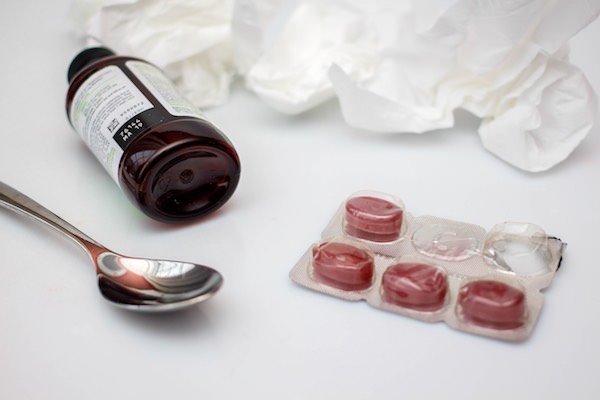
[Image above] Credit: Marco Verch; Flickr CC BY 2.0
If you haven’t been sick lately, chances are you know someone—or several someones—who has.
According to the United States Center for Disease Control, influenza activity is high; it’s widespread; and it’s particularly nasty right now.
The CDC’s latest FluView report shows widespread high levels of flu-like activity across the country, with higher than normal hospitalization rates.
Before I give you any glimmer of good news, I’m sorry—it’s only getting worse. The CDC also says that “flu activity is likely to remain elevated for several more weeks.”
And just because you got stuck with an influenza vaccination this year doesn’t mean you’re safe.
For starters, the vaccination only protects you against a handful of strains of influenza virus. Scientists and experts work hard every year to develop a new vaccination—they analyze data gathered from around the world to predict which strains will be most prevalent that year in a particular region. And—because once those strains are chosen, the vaccination still must be manufactured, distributed, and administered—this is all done well in advance of when the flu season even hits.
So even if you got stuck with the flu vaccine this year, there are many strains beyond the ones that were in that needle that can still get you sick.
For these reasons and more, effectiveness of the flu vaccination varies from year to year. And this year, it’s not particularly promising—the CDC is currently reporting an overall effectiveness of just 36% for this year’s vaccination.
Which leads us to the position we are in now—while the national baseline for incidence of people going to the doctor for flu-like symptoms usually sits around 2.2%, we recently hit a rate of almost 8%. According an infographic from Statista, here’s what that looks like compared to previous years.

So if all this news about sickness and infection has you reaching for a bottle of disinfectant, it’s now time for a little good news.
The materials science center at Trinity College Dublin, called AMBER, recently teamed up with tech company Kastus to develop an antimicrobial coating that can be applied to ceramic tiles, glass doors, smartphone screens, door handles, and much more.
According to Irish Tech News, the Science Foundation Ireland’s Industry Fellowship Programme is supporting the pairing as part of its effort to enhance collaboration and cross-pollination between industry and academia.
Kastus’s patented coatings are based on a chemical solution that is applied and fired onto a material, creating a baked-on surface layer that uses air, moisture, and visible light to activate its antimicrobial abilities. Many versions of antimicrobial surface layers have been developed before, but nearly all of those have required UV light to do their killing—such as this doped yttrium silicate ceramic.
“Using nanotechnology, Kastus’ novel and patented technology can be applied during the production process, rendering the surface 99.9% resistant to superbugs like MRSA, E. coli and other fungi,” according to the Irish Tech News article. “It is the first that can be practically factory applied on everyday hard surfaces using no toxic byproducts. Previous antimicrobial solutions needed UV light or biocide chemical leaching to be activated, but Kastus’ products are activated by indoor light and environmental moisture.”
Well that’s promising.
And because of the way the coatings can be applied, Kastus is seeking to integrate into existent manufacturing processes, such as glass manufacturing.
According to Kastus CEO John Browne in an October 2017 Silicon Republic article, “We are actually in discussions with two major smartphone manufacturers in Silicon Valley and they are looking at it as a way of coating glass and metals. This technology can cover coatings on microwaves, ovens, fridges and more, but the mobile phone market is certainly the big opportunity for us.”
Of course, these antimicrobial coatings would be welcome news for serious problems like superbugs and infectious microbes in hospitals, homes, public spaces, and more—but they won’t do a darn thing about viruses like influenza. (Sorry to get your hopes up.)
So for now, I guess containment strategies are our best bet.
Speaking of which, do you know how long are you actually contagious? A new video from NPR’s Skunk Bear has the answer—and it’s longer than you may think.
Credit: Skunk Bear; YouTube
Did you find this article interesting? Subscribe to the Ceramic Tech Today newsletter to continue to read more articles about the latest news in the ceramic and glass industry! Visit this link to get started.
